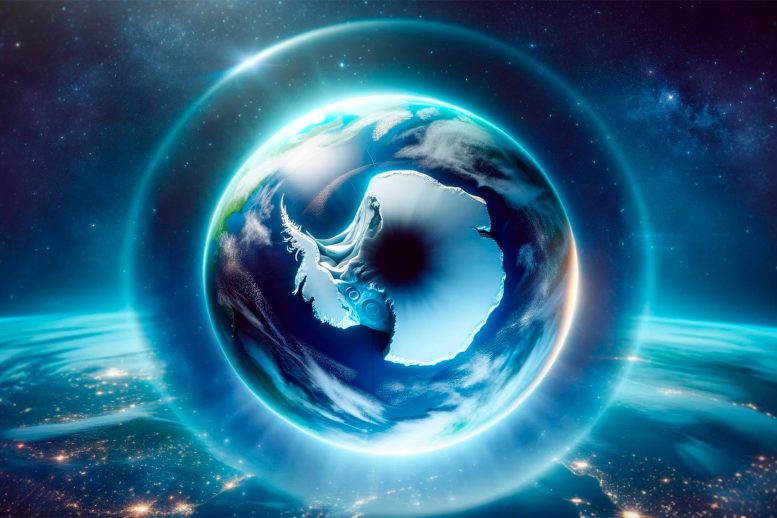
Recent research from the University of Otago indicates that the Antarctic ozone hole has been significantly larger and more persistent than commonly believed, not solely due to CFCs. The study links the hole to changes in the Southern Hemisphere’s climate and weather patterns, despite the Montreal Protocol’s efforts.
A new study reveals the Antarctic ozone hole is larger and more enduring than thought, with complex factors beyond CFCs contributing to its persistence and impact on the Southern Hemisphere’s climate.
Despite public perception, the Antarctic ozone hole has been remarkably massive and long-lived over the past four years, and University of Otago researchers believe chlorofluorocarbons (CFCs) aren’t the only things to blame.
In a study, published today (November 21) in the journal Nature Communications, the group analyzed the monthly and daily ozone changes, at different altitudes and latitudes within the Antarctic ozone hole, from 2004 to 2022.
Deepening Concerns About Ozone Depletion
Lead author Hannah Kessenich, PhD candidate in the Department of Physics, says they found there is much less ozone in the center of the ozone hole compared to 19 years ago.
“This means that the hole is not only larger in area, but also deeper throughout most of spring.
“We made connections between this drop in ozone and changes in the air that is arriving into the polar vortex above Antarctica. This reveals the recent, large ozone holes may not be caused just by CFCs,” she says.
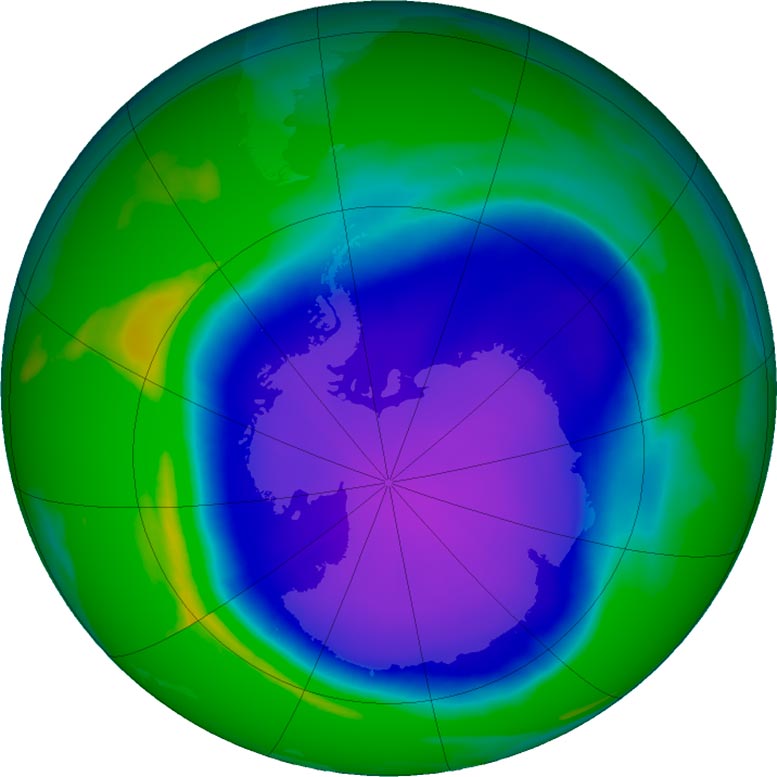
Large ozone hole recorded on October 3, 2022 Antarctic ozone hole by NASA Ozone Watch.Credit: NASA Ozone Watch
Ozone Hole Persistence Despite Montreal Protocol
While the Montreal Protocol on Substances that Deplete the Ozone Layer, which has been in place since 1987, regulates the production and consumption of man-made chemicals known to deplete the ozone, the researchers believe other complex factors are also contributing to the ozone hole.
“Most major communications about the ozone layer over the last few years have given the public the impression that the ‘ozone issue’ has been solved.
“While the Montreal Protocol has vastly improved our situation with CFCs destroying ozone, the hole has been amongst the largest on record over the past three years, and in two of the five years prior to that.
“Our analysis ended with data from 2022, but as of today the 2023 ozone hole has already surpassed the size of the three years prior – late last month it was over 26 million km2, nearly twice the area of Antarctica.”
Ozone Variability and Climate Impact
Ms. Kessenich believes understanding ozone variability is important because of the major role it plays in the Southern Hemisphere’s climate.
“We all know about the recent wildfires and cyclones in Australia and New Zealand and the Antarctic ozone hole is part of this picture.
“While separate from the impact of greenhouse gases on climate, the ozone hole interacts with the delicate balance in the atmosphere. Because ozone usually absorbs UV light, a hole in the ozone layer can not only cause extreme UV levels on the surface of Antarctica, but it can also drastically impact where heat is stored in the atmosphere.
“Downstream effects include changes to the Southern Hemisphere’s wind patterns and surface climate, which can impact us locally.”
She is quick to allay fears about extreme UV rays, though.
“New Zealanders need not worry about applying extra sunscreen this year as the Antarctic ozone hole is generally not open above New Zealand – it is mostly located directly over Antarctica and the South Pole.”
Reference: “Potential drivers of the recent large Antarctic ozone holes” by Hannah E. Kessenich, Annika Seppälä and Craig J. Rodger, 21 November 2023, Nature Communications.
DOI: 10.1038/s41467-023-42637-0


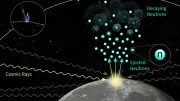


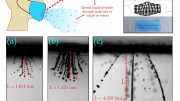
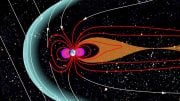
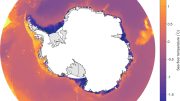

“New Zealanders need not worry about applying extra sunscreen this year as the Antarctic ozone hole is generally not open above New Zealand – it is mostly located directly over Antarctica and the South Pole.”
In fact, the sun NEVER gets directly over the so-called ‘ozone hole.’ That means the UV comes in with the sun low on the horizon (like just after sunrise in mid-latitudes), meaning that the UV intensity is low because of the cosine effect, and the long path-length results in considerable scattering and absorption. Indeed, most ozone is created in the tropical stratosphere and moves pole-wards because of Brewer-Dobson circulation. When the Antarctic circumpolar vortex is in place, ozone can’t get across the boundary and builds up to anomalously high levels outside of the vortex. [Note orange colors in the NASA map in the article.] This means that UV has to pass through the strongly absorbing regions before reaching the surface of Antarctica. By the time that the sun gets high enough in the sky to be of concern because of a reduced cosine effect, the vortex breaks up and allows the ozone, formerly piled up outside the vortex, to diffuse inside and replace the missing ozone.
“Most major communications about the ozone layer over the last few years have given the public the impression that the ‘ozone issue’ has been solved.”
That is because the scientists supporting the Montreal Protocol have reputations to protect and they have engaged in Pollyanna thinking, supported by an uncritical media. Go to the NASA website on ozone and look at the graph showing the annual ozone concentration withing the so-called hole. It is immediately obvious that the concentration is highly variable, recently about the same as in the 1990s, and clearly is affected more by weather, and events such as volcanoes, than by CFCs.
Once again, the public is not getting the complete picture on a complex phenomenon, and I can find little reason other than politics to explain it. Our method of funding ‘Big Science’ encourages scientists to find non-existent problems and elevate them to the status of existential threats that only they can prevent through their research. We were better off when scientists acted as objective observers and pursued things because of their curiosity, not because they wanted to save the world.
So when will “the science” admit that the concentration on cfcs may not have had the impact that it was considered to have done?
Gee, it’s almost as though the ozone “hole” was a seasonal phenomenon, brought on by the wintertime isolation of the polar air mass in combination with the natural depletion of ozone in the long polar night.
Fun thought experiment: There are greater than 100,000,000 square miles of surface covered by oceans. Every second of every day, enormous amounts of sea spray, 3.5 percent NACL, are wafted into the atmosphere by the wind. Obviously some percentage of this get lofted into the stratosphere by thunderstorms. Considering the scale of this phenomenon, why would this natural source of Cl, potentially totaling many millions of tons, be less important than a few thousand tons of CFCs? I have yet to see any reference to it, anywhere.